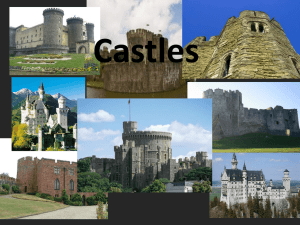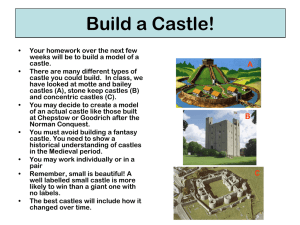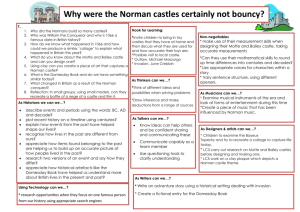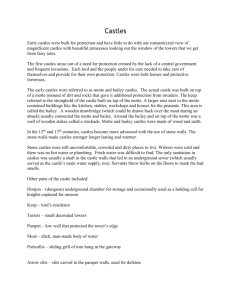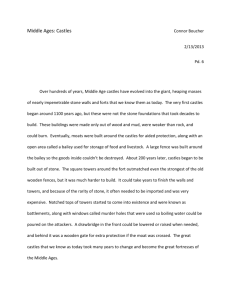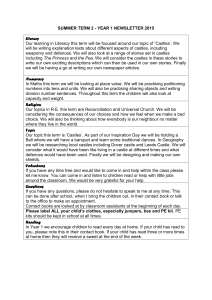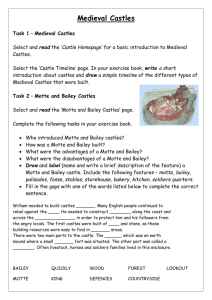Motte and Bailey Castles
advertisement
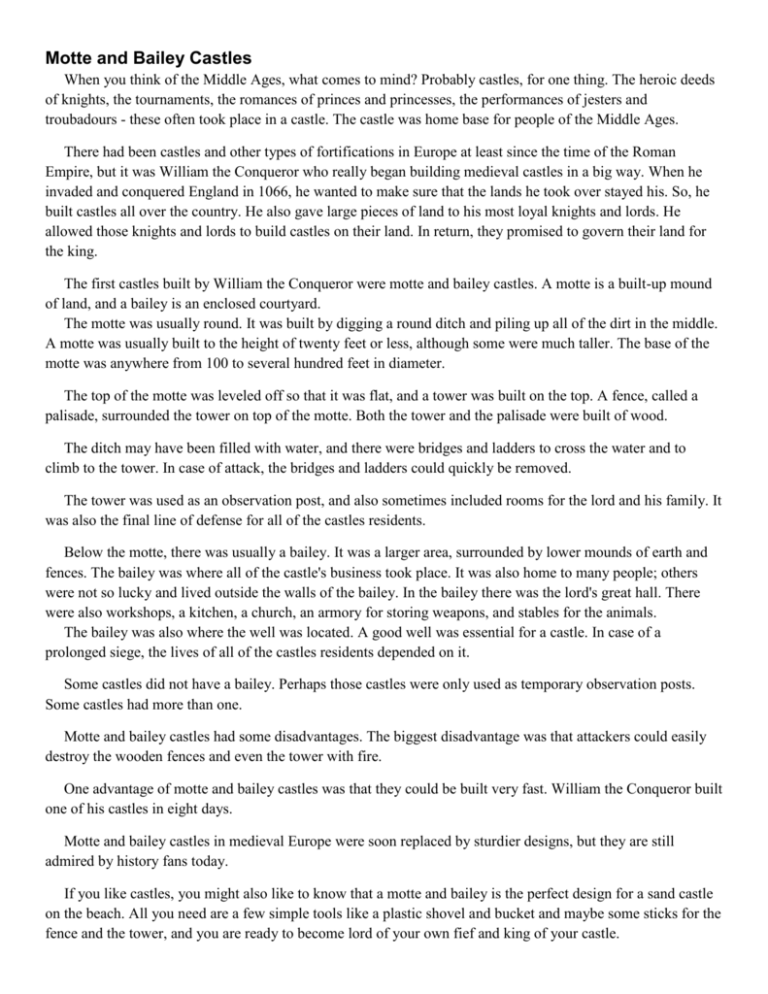
Motte and Bailey Castles When you think of the Middle Ages, what comes to mind? Probably castles, for one thing. The heroic deeds of knights, the tournaments, the romances of princes and princesses, the performances of jesters and troubadours - these often took place in a castle. The castle was home base for people of the Middle Ages. There had been castles and other types of fortifications in Europe at least since the time of the Roman Empire, but it was William the Conqueror who really began building medieval castles in a big way. When he invaded and conquered England in 1066, he wanted to make sure that the lands he took over stayed his. So, he built castles all over the country. He also gave large pieces of land to his most loyal knights and lords. He allowed those knights and lords to build castles on their land. In return, they promised to govern their land for the king. The first castles built by William the Conqueror were motte and bailey castles. A motte is a built-up mound of land, and a bailey is an enclosed courtyard. The motte was usually round. It was built by digging a round ditch and piling up all of the dirt in the middle. A motte was usually built to the height of twenty feet or less, although some were much taller. The base of the motte was anywhere from 100 to several hundred feet in diameter. The top of the motte was leveled off so that it was flat, and a tower was built on the top. A fence, called a palisade, surrounded the tower on top of the motte. Both the tower and the palisade were built of wood. The ditch may have been filled with water, and there were bridges and ladders to cross the water and to climb to the tower. In case of attack, the bridges and ladders could quickly be removed. The tower was used as an observation post, and also sometimes included rooms for the lord and his family. It was also the final line of defense for all of the castles residents. Below the motte, there was usually a bailey. It was a larger area, surrounded by lower mounds of earth and fences. The bailey was where all of the castle's business took place. It was also home to many people; others were not so lucky and lived outside the walls of the bailey. In the bailey there was the lord's great hall. There were also workshops, a kitchen, a church, an armory for storing weapons, and stables for the animals. The bailey was also where the well was located. A good well was essential for a castle. In case of a prolonged siege, the lives of all of the castles residents depended on it. Some castles did not have a bailey. Perhaps those castles were only used as temporary observation posts. Some castles had more than one. Motte and bailey castles had some disadvantages. The biggest disadvantage was that attackers could easily destroy the wooden fences and even the tower with fire. One advantage of motte and bailey castles was that they could be built very fast. William the Conqueror built one of his castles in eight days. Motte and bailey castles in medieval Europe were soon replaced by sturdier designs, but they are still admired by history fans today. If you like castles, you might also like to know that a motte and bailey is the perfect design for a sand castle on the beach. All you need are a few simple tools like a plastic shovel and bucket and maybe some sticks for the fence and the tower, and you are ready to become lord of your own fief and king of your castle.
